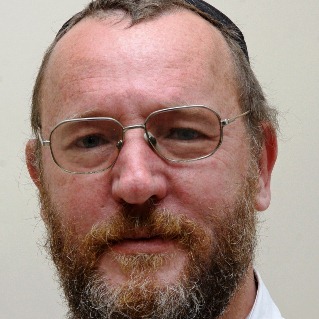click to dowload our latest edition
CLICK HERE TO SUBSCRIBE TO OUR NEWSLETTER


Published
9 years agoon
By
adminDAVID SAKS
Even before the emergence of ISIS, the number of Iraqi refugees around the world was estimated at some four million, while the civil war in Syria has resulted in over three million fleeing to neighbouring countries. Other war-torn Arab states experiencing massive population upheavals include Libya, Sudan, Somalia and Eritrea.
The current Middle Eastern refugee crisis is the largest, while also exceeding many times over, the region’s previous most serious case of population displacement, namely those resulting from Israel’s establishment in 1948. It is well known that an estimated 700 000 Palestinian Arabs fled or were expelled as a result of the conflicts immediately preceding and following Israel’s establishment. Considerably less well known is that an even greater number of Jews were forced out of their homelands as a direct result of Israel’s creation.
Exploiting the legacy of anti-white resentment, local anti-Israel campaigners regularly portray Zionism as an extension of European colonialism and Israeli Jews as a foreign implant of European origin.
The reality, however, is that most Israeli Jews hail from Middle Eastern countries, which in addition to Israel itself include Syria, Iraq, Yemen, Egypt and Libya. In 1948, an estimated 760 000 to 880 000 Jews lived in Arab-speaking countries. Today, there are fewer than 5 000 (mostly in Morocco and Tunisia). Of those who left, approximately three in four settled in Israel. Their descendants today constitute over 60 per cent of Israel’s population.
This extraordinary mass exodus all but brought to an end in the Arab world a Jewish presence that predated by many centuries not only Islam, but Christianity. The bare statistics tell their own story.
Libya’s population was once three per cent Jewish; today, not a single professing Jew remains. In Egypt, a hundred are left out of 80 000 and Yemen’s 60 000 and Syria’s 25 000 comprise a few hundred at most. Most dramatic of all has been the disappearance of Iraqi Jewry, where fewer than a dozen remain out of a pre-1948 community of 150 000.
Mizrachi (“Eastern”) Israelis have much in common with their Arab fellow-citizens, including the fact that they or their forebears shared the same language. Given this heritage, one would expect to find a higher degree of sympathy towards the Arab world within this sector, but in fact the opposite is true.
In political terms, Mizrachi Jews consistently support right-leaning parties, whereas it is among the more secular, Westernised Jews of European origin that one finds the highest levels of support for those on the left.
The reasons for this are not hard to identify. In the years leading up to and following Israel’s establishment, Jews throughout the Middle East were subjected to a systematic policy of state-sponsored persecution, including being dismissed from civil services and with quotas placed on their holding university positions. Show trials against Jewish community members, instigated on the flimsiest of pretexts, were commonplace, usually leading to conviction and public execution.
All this went side by side with innumerable acts of violence by their non-Jewish neighbours, including massacres, looting and destruction of property.
Under the circumstances, Mizrachi Jews began emigrating en masse. This was despite the fact that they would arrive in their new homeland all but destitute. Similarly to what Jews able to escape pre-war Germany experienced, they were allowed to take only a fraction of their possessions with them.
The total value of Jewish property abandoned or seized during this time, is estimated at between $100 and $300 billion, including real-estate amounting to 100 000 square kilometres (four times the size of Israel).
Despite the magnitude of the catastrophe that befell Mizrachi Jewry, the “Jewish Nakhba” as it is sometimes called, has been accorded minimal attention by the world at large. Instead, it is the “Palestinian Nakhba” that has dominated the discourse around refugees and restitution in the context of the Middle East.
Comparing the two situations is predictably an area fraught with controversy. Palestinians claim that the issue is a red herring aimed at denying them and their descendants, their “right of return” and compensation.
Sometimes, it is denied that Mizrachi Jews came to Israel as refugees at all, but that rather their immigration was voluntary. From the other side, it is argued that the comparison is specious and insulting, since whereas Arabs in Israel were displaced in a war their own leaders and other Arab states had themselves instigated, Arab countries targeted their Jewish inhabitants solely because, as Jews, they were held to be collectively guilty for the humiliating loss of “Palestine”.
Today, the persecution that led to the virtual disappearance of Jews in Arab countries is being repeated in the religiously-motivated persecution of Christians. It is no accident that Christians make up 40 per cent of Iraqi refugees, despite having comprised less than 5 per cent of the Iraqi population.
The targeting of Christians and other religious minorities is especially horrific in areas where ISIS operates, but anti-Christian persecution is on the increase throughout the Middle East. It all bears out Rabbi Jonathan Sacks’ warning that while acts of hate might begin with the Jews, they seldom end with them.

nat cheiman
Mar 25, 2015 at 4:55 pm
‘No one in the world really cares about displaced Syrians/Tunisians / Libyans/ Egyptians/ Palestinians.
(Although it could be said that Italy currently is welcoming them by the boat load).
Who gives a damn?’